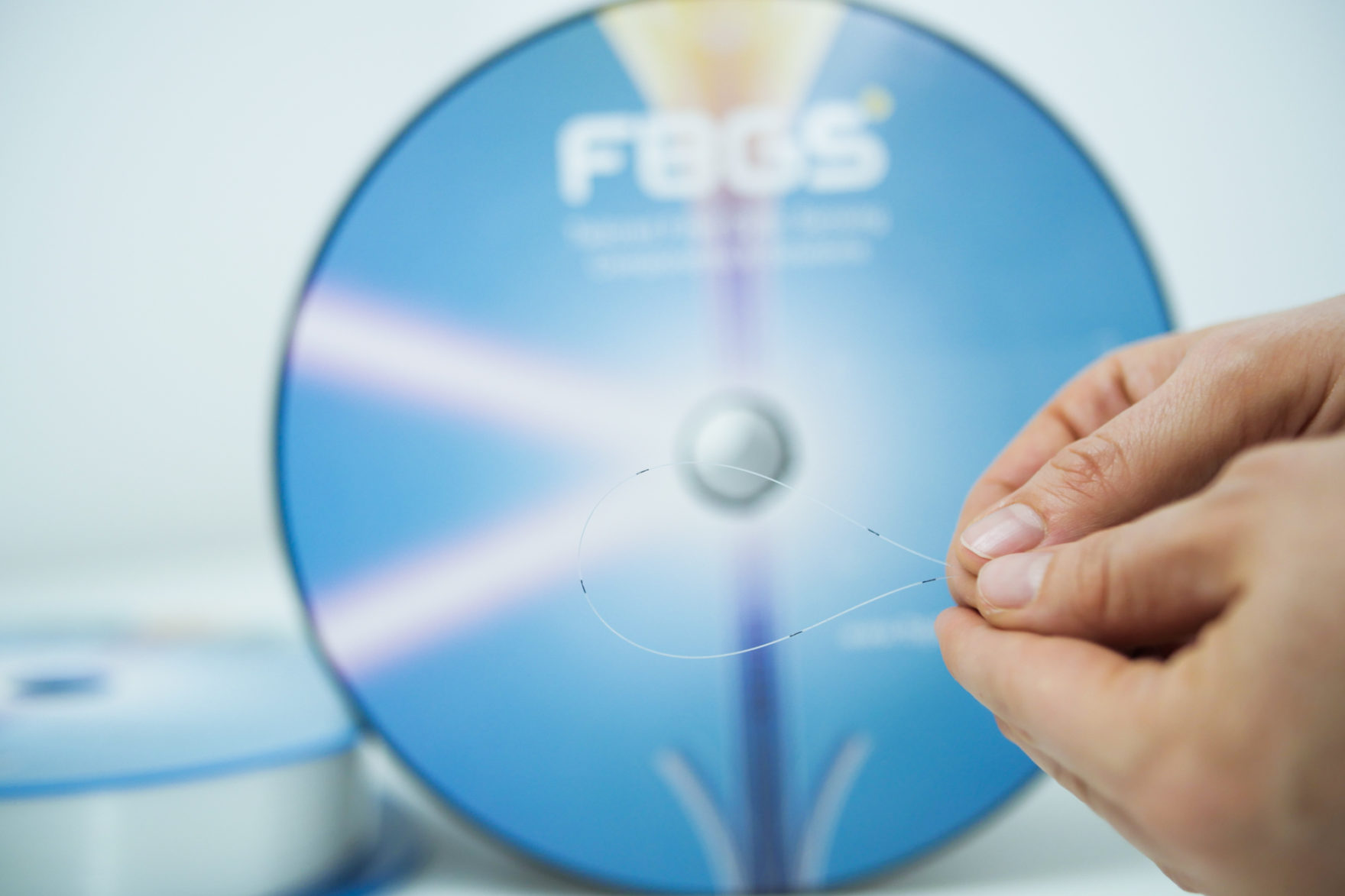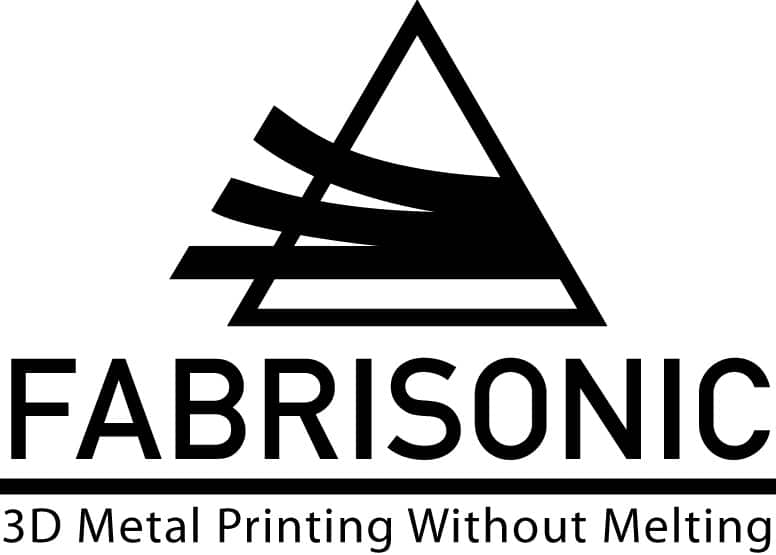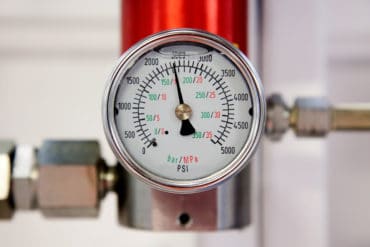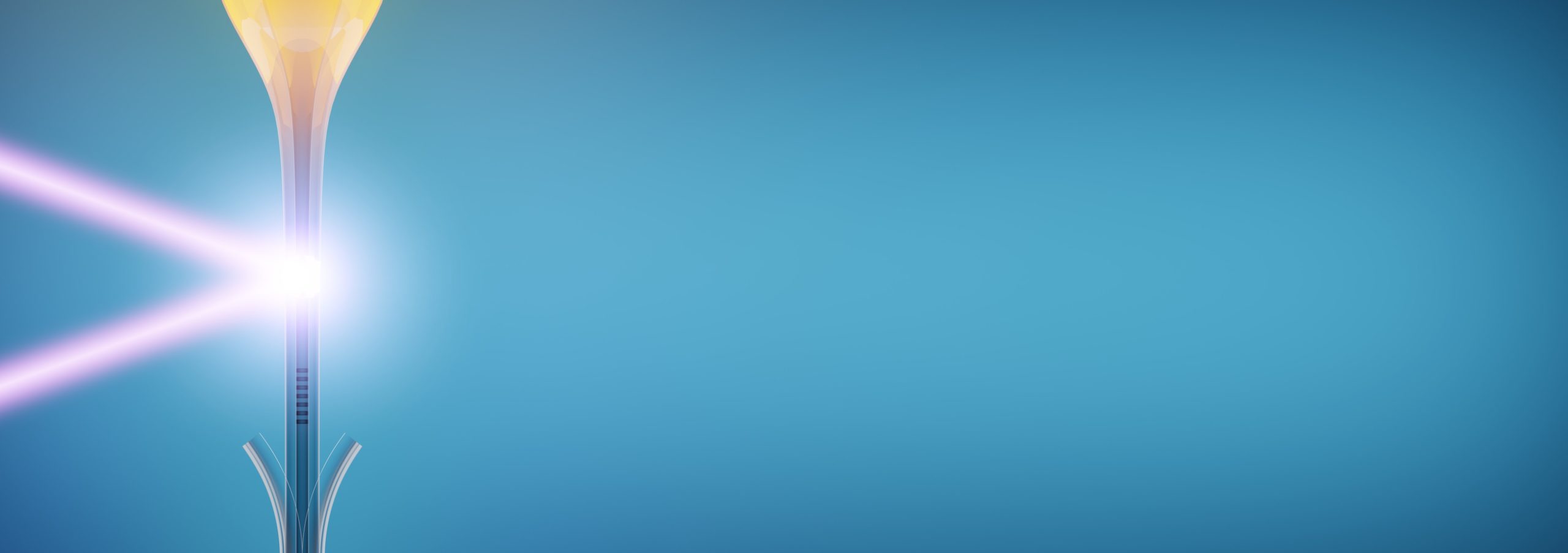DTG®s in low bend loss fiber
Draw Tower Gratings (DTG®s) written in Low Bend Loss fiber LBL-1550-125 which has a cladding diameter of 125µm and is optimized for operation in the 1550nm wavelength window. The glass composition has been tuned such that the fiber maintains a good signal transmission under small bending diameters.
Draw Tower Gratings (DTG®s) written in Low Bend Loss fiber LBL-830-125 which has a cladding diameter of 125µm and is optimized for operation in the 830nm wavelength window. The glass composition has been tuned such that the fiber maintains a good signal transmission under small bending diameters.
DTG®s in reduced cladding fibers
Draw Tower Gratings (DTG®s) written into Low Bend Loss fiber LBL-1550-80 which has a cladding diameter of 80μm and is optimized for operation in the 1550nm wavelength window. The reduced cladding diameter offers several major advantages compared to standard 125µm fibers:
- Unobtrusiveness – particularly interesting for embedding applications including carbon composite structures and medical catheters.
- Increased sensitivity – less force is required to strain the fiber enhancing the performance of sensors based on force or acoustic sensing.
- Reduced bending radii – lower surface strain levels enabling more compact sensor designs.
Overview
| Parameter | Low Bend Loss Fiber 1550-125 | Low bend loss fiber 830-125 | Reduced cladding fibers | |||
| Reflectivity (for grating length of 8mm) | > 15% | |||||
| FWHM (for grating length of 8mm) | 100 pm | 30 pm | 100 pm | |||
| Centre wavelength (extended range upon request) | 1510–159 0 nm | 1460–1620 nm | 810–860 nm | 1510–159 0 nm | 1460–1620 nm | |
| Absolute wavelength accuracy¹ | ≤ 0.5 nm | ≤ 0.8 nm | ≤ 0.5 nm | ≤ 0.5 nm | ≤ 0.8 nm | |
| Relative wavelength accuracy | ≤ 0.3 nm | ≤ 0.5 nm | ≤ 0.3 nm | ≤ 0.3 nm | ≤ 0.5 nm | |
| Side Lobe Suppression (SLS) | ≥ 10 dB (typical) | |||||
| DTG® length | 2–10 mm / 8 mm (typical) | |||||
| Attenuation | < 8.6 dB/km | < 18.4 dB / km | < 8.6 dB/km | |||
| Mode Field Diameter (MFD) @ 1550 nm | 6 μm (typical) | 5 μm (typical) | 6 μm (typical) | |||
| Numerical Aperture (NA) | 0.26 (typical) | |||||
| Cladding diameter | 125 μm ± 1 μm | 80 μm ± 1 μm | ||||
| Coating type² | ORMOCER®/ORMOCER®-T / One layer Acrylate | |||||
| Coated fiber diameter | 195 μm (typical) | 120 μm (typical) | ||||
| Tensile load at break³ | > 50 N (corresponds to >5% strain) | > 20 N (corresponds to >5% strain) | ||||
| Temperature sensitivity⁴ (formula: Δλ/(λ ⋅ ΔT) ) | 6.5 K-1 ⋅ 10-6 (typical) | |||||
| Strain sensitivity¹ (formula: Δλ/(λ ⋅ Δε) ) | 7.8 με-1 ⋅ 10-7 (typical) | |||||
| Operational temperature range | -200–200°C for ORMOCER® | |||||
| -20–200°C for ORMOCER®-T | ||||||
| -20–90°C for One layer Acrylate | ||||||
1 measured at room temperature
2 ORMOCER® is mainly applied for strain measurements while ORMOCER®-T is recommended for temperature measurements.
3 according to IEC-60793-1-31 using a constant displacement of 30 mm/minute
4 measured between 0°C and 70°C
5 Temperature range is dependent on exposure time.
ORMOCER®: trademark of Fraunhofer-Gesellschaft zur Förderung der angewandten Forschung e.V.










